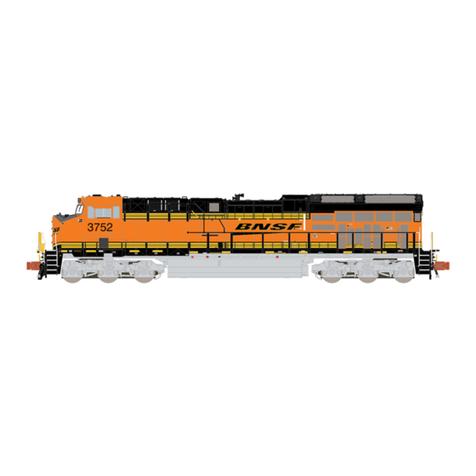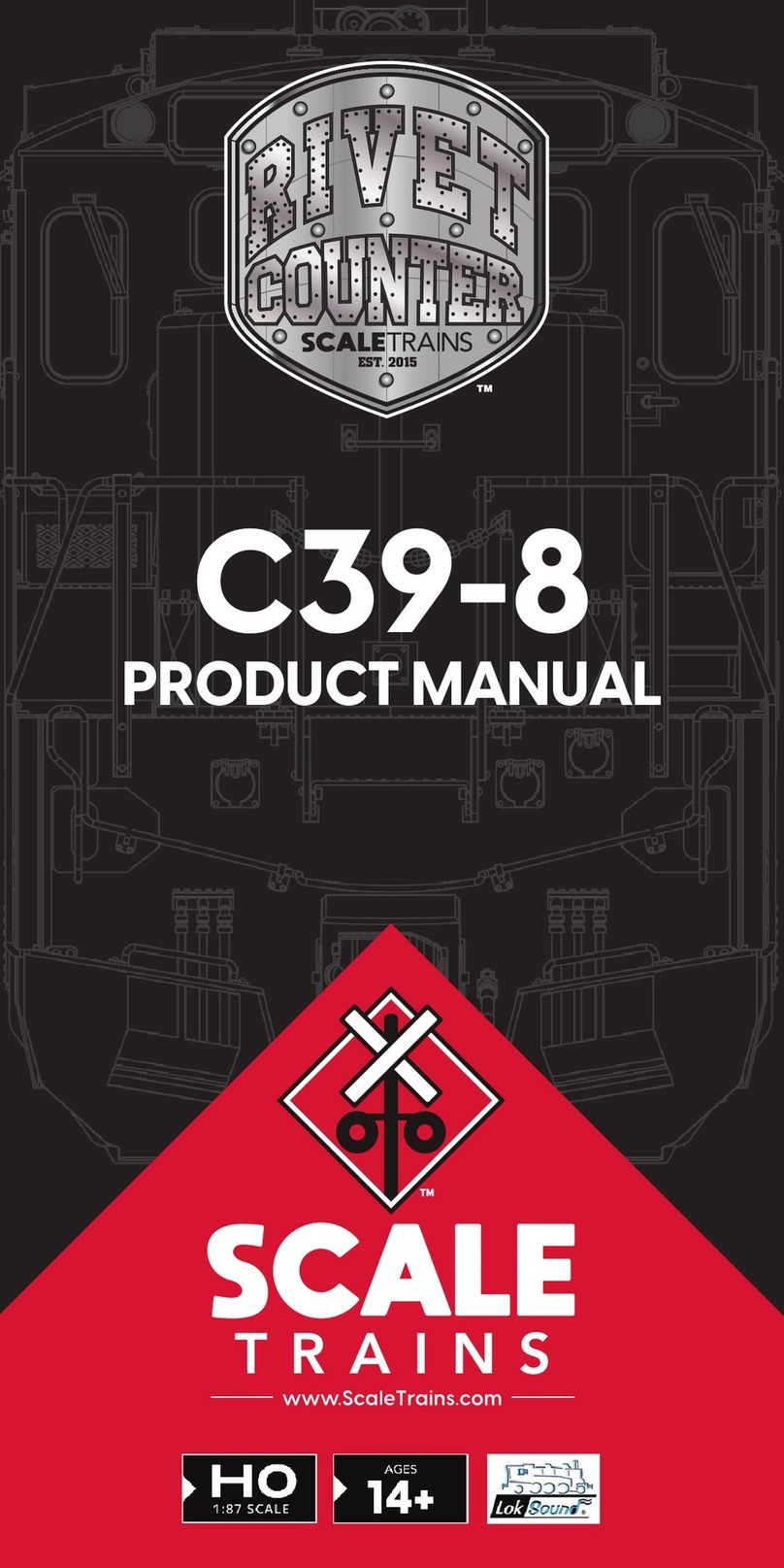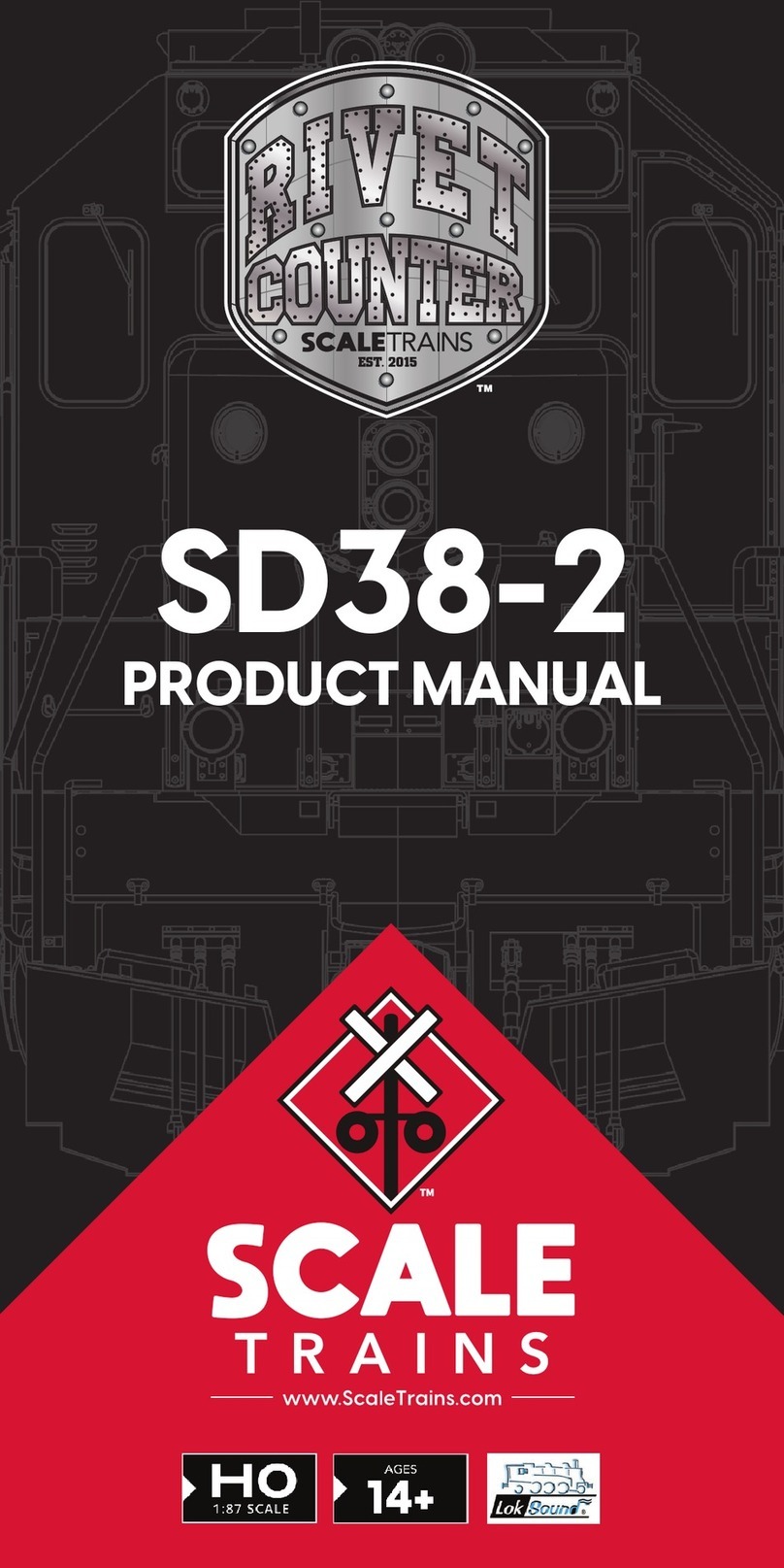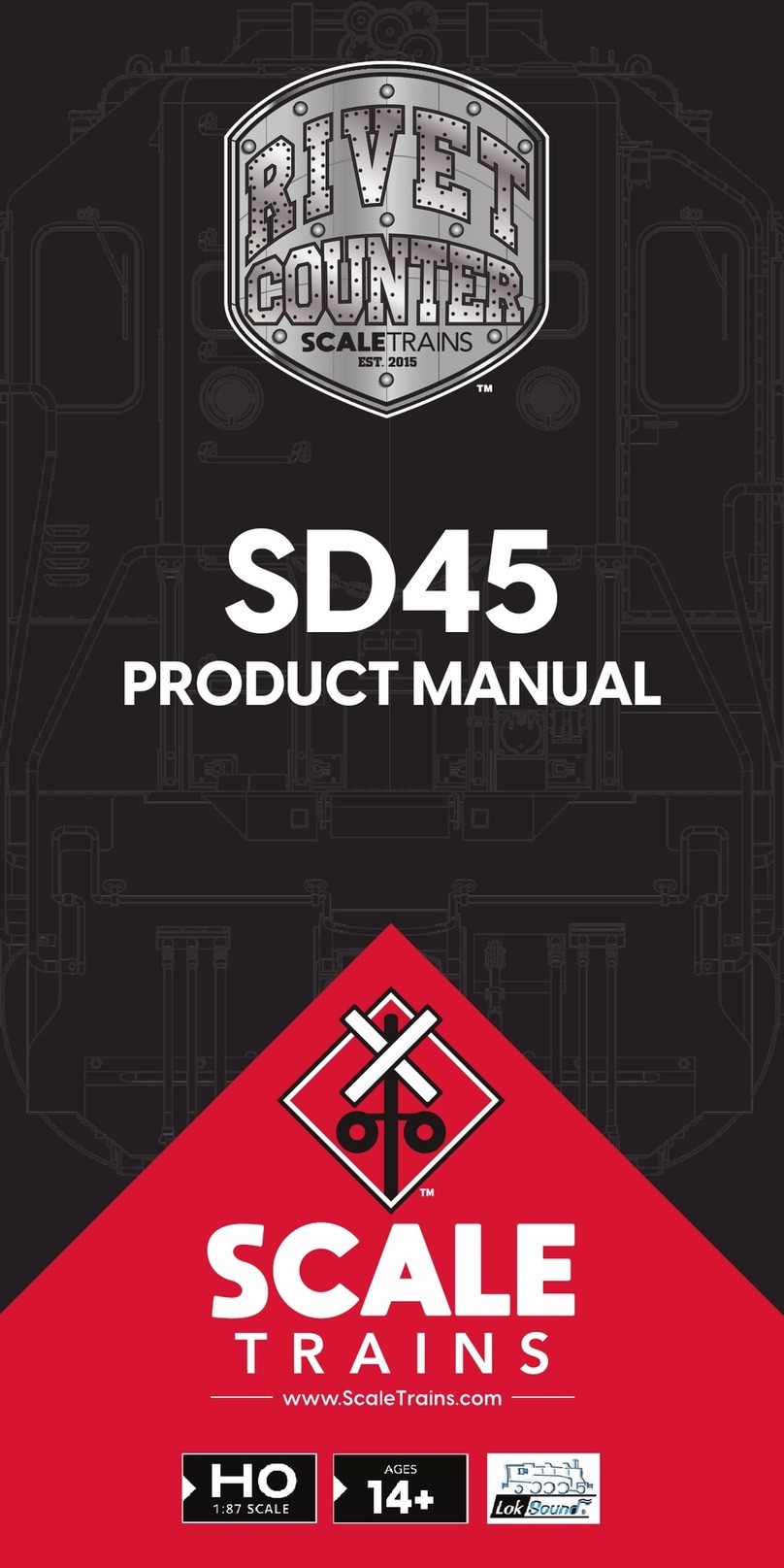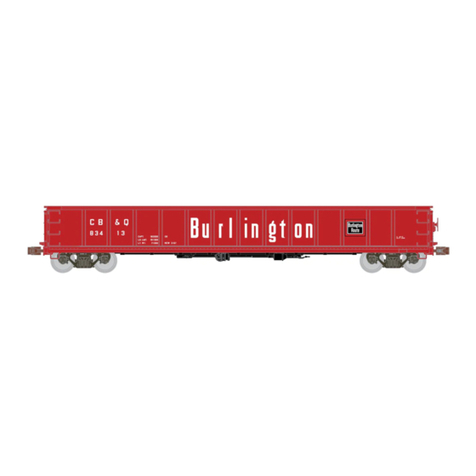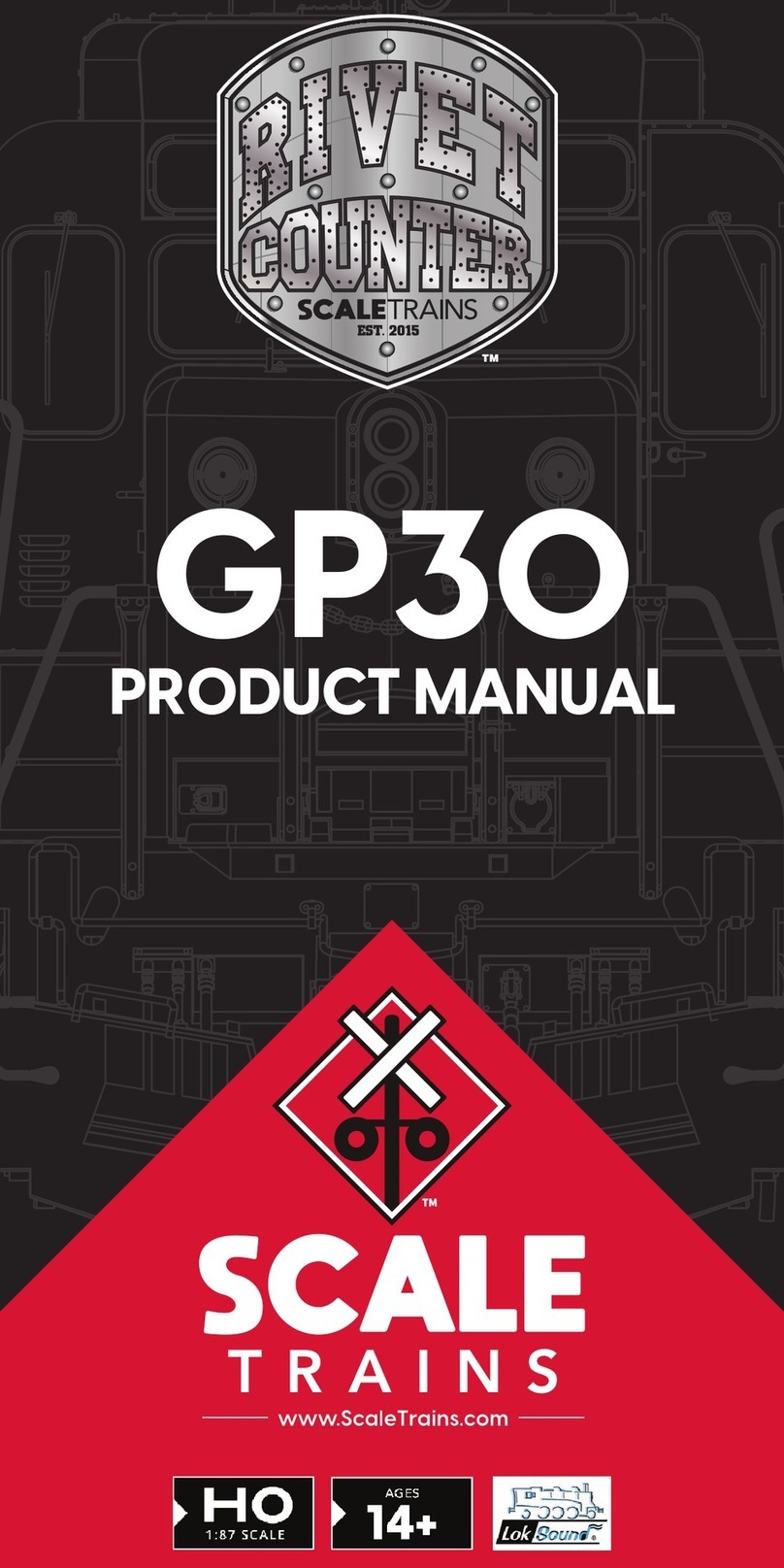
2 3
INTRODUCTION
Thank you for your purchase of our Museum Quality™SDL39 locomotive. In this
booklet you will nd information in regards to maintenance, lubrication, body
removal, storage and basic DCC instructions. For additional information, part
numbers, and exploded drawings, please see our website: www.scaletrains.com.
If you have purchased a DCC and Sound Equipped model, then you will have
access to all the features of this outstanding locomotive. For those that have
purchased the DCC and Sound Ready version, the DCC information contained
in this manual will not be applicable to your model. All of our models are
equipped with a 21 pin MTC receptacle should you decide to install DCC at a
later date. Our SDL39 should accept any 21 pin DCC decoder.
One new and exciting feature of your new Museum Quality SDL39 is that it has
the latest version of ESU software installed which includes the “Full Throttle”
feature. This allows even more realistic locomotive operation. We recommend
that you download the “Full Throttle” Quick Start Guide and the decoder
manual from the ESU website to learn all about this and other features of ESU
decoders. Visit www.LokSound.com for more information.
Our DCC and Sound Equipped SDL39 locomotive model is tted with the ESU
LokSound™V5 (ESU #58429) full-function DCC decoder. For more information
and to download the decoder technical manual, visit the ESU website listed
above. The manual document number is 51989.
For those purchasing a DCC and Sound Ready locomotive who want to install
sound at a later time, the same decoder may be used. If you wish to install a
non-sound decoder, ScaleTrains™ recommends the ESU LokPilot™ # 59629.
When choosing a decoder for a DCC and Sound Ready unit it is important to
remember that ONLY ESU decoders will have access to the advanced lighting
features of our ScaleTrains locomotives and the Power Pack™circuit. Please
contact our sales department for assistance in selecting the proper decoder
and programming for your operation. The manual for the non-sound decoder
is document number 51986. Either choice will allow you to get the most out of
the sound or lighting functions designed for your locomotive. Please see the
section “Something New” for more information on installing decoders.
Your state-of-the-art locomotive model is designed to utilize either two sugar
cube type speakers, 11mm x 15mm, in the included custom enclosure and
wired in parallel back to the main board or a 16mm x 35mm oval speaker
mounted directly into the die-cast frame in place of the enclosure for the
smaller speaker pair.
NOTE: Other brand 21-pin decoders may t, however, they will not have access
to certain electronic components on the main board that control some lighting
functions and the Power Pack circuit.
THE PROTOTYPE
Milwaukee Road, with its branch lines and light infrastructure, purchased SD7s
and other similar locomotives for its operations. As these locomotives aged,
Milwaukee turned to EMD for a solution, resulting in the development of the
SDL39. The SDL39 was a compact locomotive, shorter and lighter than a GP38,
with a turbocharged 12-cylinder engine and reduced weight components. The
rst ve units were delivered in April 1969, with an additional ve delivered
in November 1972. The two orders of SDL39s had some differences in pilot
construction, ECAFB, jacking pads, and other features. Over time, modications
were made to the locomotives, including the removal of snow shields, the
addition of winterization hatches, and the replacement of electronic bells with
standard ones. Over the years, through mergers and acquisitions, the SDL39s
were owned by Soo Line, Wisconsin Central, and eventually Fepasa in Chile.
